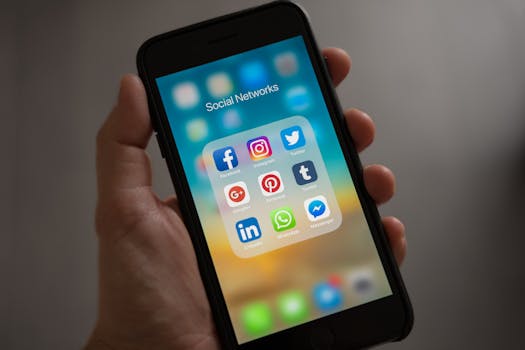The Impact of Social Media on Communication
Social media has revolutionized the way people communicate, impacting everything from personal relationships to professional interactions. Platforms such as Facebook, Twitter, Instagram, and LinkedIn have transformed traditional communication methods, introducing new dynamics in how information is shared and consumed. This transformation has brought about both positive and negative consequences, influencing how individuals connect, share ideas, and interact with one another.

The Evolution of Communication Through Social Media
Historically, communication was largely face-to-face or through written correspondence. The advent of the internet introduced email and chat rooms, which began to change the landscape. With the rise of social media in the early 2000s, communication became instantaneous and far-reaching. Platforms like MySpace and later Facebook allowed users to share updates, photos, and thoughts in real time.
Social media has since evolved to include a variety of platforms catering to different needs. For instance, Twitter focuses on short messages or "tweets," while Instagram emphasizes visual content. LinkedIn has become a hub for professional networking. This evolution has led to a more interconnected world where news and information can be disseminated rapidly.
A study by Pew Research Center found that as of 2021, 72% of American adults use some form of social media (pewresearch.org). This widespread adoption highlights the significant role these platforms play in modern communication.
Positive Impacts on Personal Communication
Social media offers several benefits for personal communication. One of the most notable is the ability to stay connected with friends and family regardless of geographical barriers. Platforms like Facebook and WhatsApp enable users to maintain relationships across long distances through messages, video calls, and shared content.
Moreover, social media provides a platform for self-expression. Users can share their thoughts, experiences, and creativity with a broader audience. This can lead to increased self-esteem and a sense of community as individuals find others with similar interests or experiences.
Additionally, social media has facilitated the organization of events and activities. Whether it's planning a reunion or coordinating a community project, these platforms make it easier to gather people together for a common purpose.
- Maintaining long-distance relationships
- Facilitating self-expression
- Organizing events and activities
Negative Impacts on Personal Communication
Despite its benefits, social media also has drawbacks that can affect personal communication negatively. One major issue is the potential for reduced face-to-face interactions. As people spend more time online, they may neglect in-person relationships, leading to feelings of isolation and loneliness.
The phenomenon of "social comparison" is another concern. Users often compare their lives to the curated versions presented by others on social media. This can lead to feelings of inadequacy and depression. A study published in the Journal of Social and Clinical Psychology found a correlation between time spent on social media and increased levels of depression and anxiety (journalofsocialandclinicalpsychology.com).
Furthermore, the spread of misinformation is a significant issue. Social media platforms can quickly disseminate false information, leading to misunderstandings and conflicts among users.
The Role of Social Media in Professional Communication
Social media has also transformed professional communication. Platforms like LinkedIn provide opportunities for networking, job searching, and professional development. Professionals can connect with industry leaders, join groups related to their field, and stay updated on industry trends.
Businesses use social media for marketing purposes as well. Companies can reach a global audience through targeted ads and engaging content. This has become an essential tool for brand building and customer engagement.
A survey by Statista revealed that 91% of businesses use social media for marketing purposes (statista.com). The ability to interact directly with customers allows businesses to build stronger relationships and address customer concerns promptly.
The Challenges of Professional Communication on Social Media
While social media offers numerous advantages for professional communication, it also presents challenges. One significant challenge is maintaining professionalism on public platforms. The informal nature of social media can blur the lines between personal and professional interactions.
Another issue is managing online reputation. Negative reviews or comments can quickly damage a company's reputation if not addressed appropriately. Businesses must be vigilant in monitoring their online presence and responding to feedback constructively.
| Platform | Usage Purpose |
|---|---|
| Professional networking | |
| Personal connections & business marketing | |
| News updates & public engagement |
Where next?
Social media companies are also increasingly focusing on user privacy and data security in response to growing concerns about data breaches and misuse of personal information. Enhanced privacy features will likely become standard as users demand greater control over their data.
The impact of social media on communication is simple - It has revolutionized how people connect personally and professionally while introducing new challenges that need addressing. The benefits include maintaining long-distance relationships, facilitating self-expression, organizing events, networking opportunities, and effective business marketing.
However, drawbacks such as reduced face-to-face interactions, social comparison issues, misinformation spread, professionalism challenges on public platforms, and online reputation management must be carefully managed. Striking a balance between leveraging social media's advantages while mitigating its negative effects will be crucial for healthy communication practices in the future.